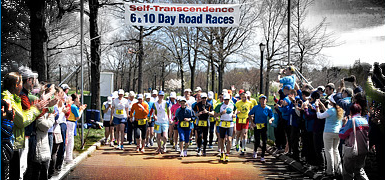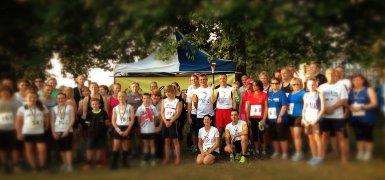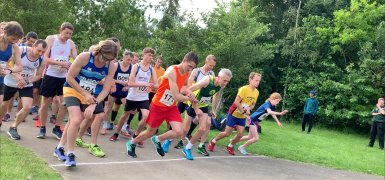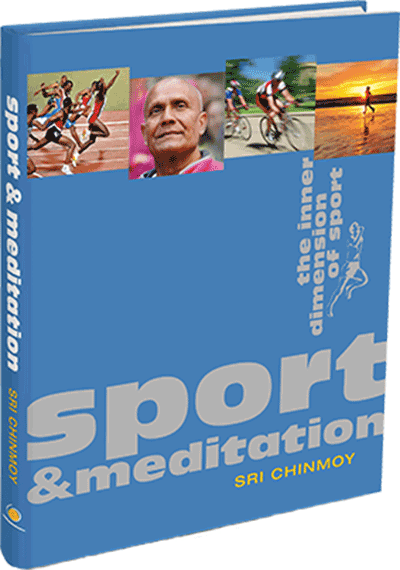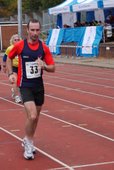
The preparation:
When John O’Regan first mentioned about the 24 hour race, a couple things came to mind – firstly, who in their right mind would consider it fun to run for 24 hours, and secondly, who in their right mind …….!
And so my interest in the 2009 Self-Transcendence 24 Hour Track Race was piqued. The most John had run before in this type of event was 100k (Celtic Plate 2008, Galway) so it was going to be a challenge, a very big challenge; but having experienced his approached previous challenges I knew that his commitment to training, his competitive spirit and the application of a fair degree of stubbornness, that he would succeed.
The preparation for the race involved figuring out the answer to two major questions: (At this stage the physical and mental ability were taken as a given).
(1) How far could we expect John to run over the duration &
(2) What level and mix of fuel would be required sustain the required effort over the 24 hours.
The preparation involved consultation with and detailed testing by Dr Nick Mahony, Bernard Donne and the team in Trinity College’s Sports Science Department, who confirmed how ready the body was to take on the task and how far it could be pushed. He also relied heavily on the experience of athletes like Eoin Keith and endurance record holding cyclist Paul O’Donoghue to help with diet plan and just as importantly, the mental preparation.
And so a plan emerged: John was going to run 210km and was going to need 60gr of Carbohydrates each hour. Now we had a plan, all John had to do was execute it.
The Race:
The venue was the Tooting Bec track in south London, the time was 12 noon and the weather was just perfect for running. The first thing that struck me as the 46 brave souls lined-up at the start line, was the remarkable mix of ages, shapes and sizes. I was expecting a field of young, undernourished-looking men, but what presented was an eclectic mix of international competitors ranging in ages from 29 to 76, 11 of whom were women. There was quite a relaxed atmosphere at the start with many of the competitors having a number of 24 hour races under their belts. Not so for John, who was a little apprehensive on the start line, a bundle of pent-up nervous energy waiting to explode.
But both Steven Seaton (Runners World) and I were there to support him and to do whatever is took to deliver the plan.
12:00 to 20:00
His instructions were clear – do not run any more than 10km in the first hour, stick to the fuelling plan, and certainly don’t try to keep up with anyone. Before the race we never assessed what delivering 210km would mean in terms of positioning, but it was largely irrelevant, this event was about going the distance and learning from the experience. John settled in nicely to the race and limiting his pace to a heart rate max, delivered the first four hours with a few km ahead of plan. The fluid intake seemed right, the fuelling plan was working and we were really happy with the steady start to the race.
John hit the marathon distance in 4:05 and was feeling good.
My initial concerns about having lots of time to fill during the 24 hours failed to materialise as we soon got into a rhythm of preparing food, tracking pace, monitoring distance, supporting toilet breaks and satisfying John’s every whim. The hours started flying by. The next four hours delivered another 40k and a quick change into his Skins leggings. The 2 minutes it took to change the gear was the first John time got off his feet in the 8 hours. We were still slightly ahead of the plan, and started getting more confident that it could be delivered. This steady progress meant John finished the 8 hour mark in 7th place.
20:00 to 04:00
The middle phase of the plan was to deliver 73 km, which anticipated a slight slowing in pace. Just after a toilet break at 20:00 John walked his first lap. The walking lap is a great opportunity to eat some solids (energy bar, bagels or pancakes) and a chance to really assess how he was doing in terms of HR, effort and any potential injuries that were starting to emerge. At 10pm John noticed a bit of a ‘twinge’ at the end of his shin. At this point I was a little worried that it was early and a potential problems began to emerge. At 1am John decided that a change of shoes might help to address the pain in his shin and counteract any affect of his feet swelling after 13 hours running. He had run 318 laps of the track, had gone to the toilet 5 times, sat down twice to change gear but had only walked one of the laps. If we could keep the shin at bay, the plan was beginning to look good.
In the last part of this phase of the race, a few cracks started to emerge. The level of fluid being consumed was now requiring a toilet break every hour, he couldn’t tolerate eating the bagels or the raisins and the pace was falling a little but behind, eating away the gains we had banked. This stage in the night brought a drop in temperature to 0 degrees, so the dew that covered our gear quickly turned to ice. At 3am John donned his hat and gloves to counteract the affects of the cold and walked his second lap of the race. Things were now starting to get interesting as the leader board showed John O’Regan in fourth position. Was it too early to hope for a finish position like that? Or were the experienced runners going to eat him up in the last eight hours when John faded towards the end? We did not know, but we hoped he could hold on.
05:00 to 11:00
The last third of the race was always going to be the difficult one to judge, just because the plan said John was to do 57k, did not mean that he could physically do it. And two problems still existed – His shin was starting to really hurt and the carbohydrate intake was well below the required level – caused by having to do without the bagels and the raisins. That’s when Percy Pig came to the rescue! Well not completely, but he certainly helped. For those of you who don’t know Percy Pig – he is a wonderful sweet from M&S that delivers a wonderful 6g of carb per pig – they were reserved for a flavoursome treat in the plan, but were offered and consumed with a frequency that would have a school full of children hyperactive!
Things started to get really interesting when the 6am leader board was posted which show John now in third place. Up to this point it was not about the other runners at all, we monitored and measured their pace and observed their routines purely out of passing interest. But now we had a race on our hands. How far ahead was the guy in front? And more importantly how far behind was the next guy and could John be caught?
John passed the 100mile mark after 16hours 50mins and cheered-up by the rising sun and third place on the board delivered a really strong
7 hours between 5am and 11am. In that time, he delivered an 8.4 km an hour average when the plan required 7.3km. Not only were we looking at a possible 3rd place finish, but 215 km was a near definite and 220km a distinct possibility. The fuelling plan now consisted of a lot of flattened coke which provided the necessary fluid and sugar boost.
Percy Pig also played his part.
The Final hour:
The sun now shone brightly, the temperature rose to a very pleasant level and 531 laps were completed in the 23 hours. We had a problem, PerAuden Heskestad from Sweeden was running a consistent 2:25 minute lap and despite a 2km lead it was very possible for him to catch John.
The inevitable happened with about 40 minutes to go, PerAuden made up gap and passed by. It was out with the calculators again to check two things – could we get John to 220km and was Neil Bryant going to be able to make up the deficit. I was now very worried, John was fading fast, the pain in his shin was getting unbearable and Neil was moving fairly steadily.
The last 20 minutes was a battle to keep him going, running was not possible due to the pain, and the reality was that he was moving faster when he walked. It was a very strange sight to see almost everyone still in the race pick it up for the last 30 minutes.
Athletes, literally dead on their feet, found the motivation from somewhere, to raise their heads and eek the last few meters out of the
24 hours. So focused were we on keeping John moving that I miscounted the last few laps and we very happy to finish with 219km and a fourth position. Despite the difficulties over the last hour, John still managed to deliver 7.6 km, the last 3laps of which Steve and I walked with him. It was an amazing and emotional feeling to be on the track as the final siren sounded and 26 competitors stopped dead on their feet. At that point, it had nothing to do with the race positions or the distance travelled but the immense sense of personal achievement that each one of them felt, as they stood transfixed on the track, smiling in the sun.
The Result:
And so the race was over, the stretch target exceeded and an incredible maiden 24 hour race now firmly recorded in John’s CV. The icing on the cake was the fourth place finish, I believe that John secretly hoped for a top 10 finish, but was still more interested in getting the distance. It was a wonderful sight to see all the competitors now relaxed and smiling in the sun waiting to hear the official results. The winner, Richard Quennell covered 234.8 in the 24 hours, John was a mere 14.8km behind him. As I pointed out to John, if he was able to cover a mere 600m more per hour he would have covered the same distance – easy really!
Of the 35 athletes who completed the race, 25 of them ran over 100 miles. The last surprise of the day was the announcement of John’s fourth position and official distance. Steve thought he heard a distance of 220km being called, but that could not have been, I had tracked all the way and was positive that we had only made 219 and a lap or so, the holy grail of 220km was not achieved! A quick check with the referee confirmed a final distance 220km and 21m – had I known it was achieved; I might have been able to claim a near perfect result, but I was just as surprised and delighted as John. All of which goes to show that 24 hours is a long time to be doing anything!
http://www.ultrarunningireland.com/live/news/

